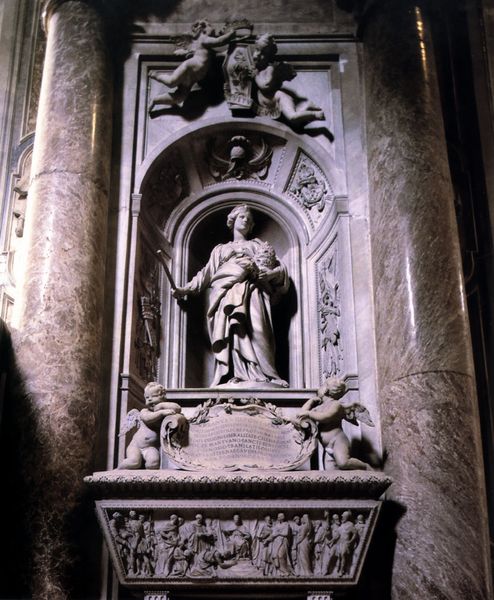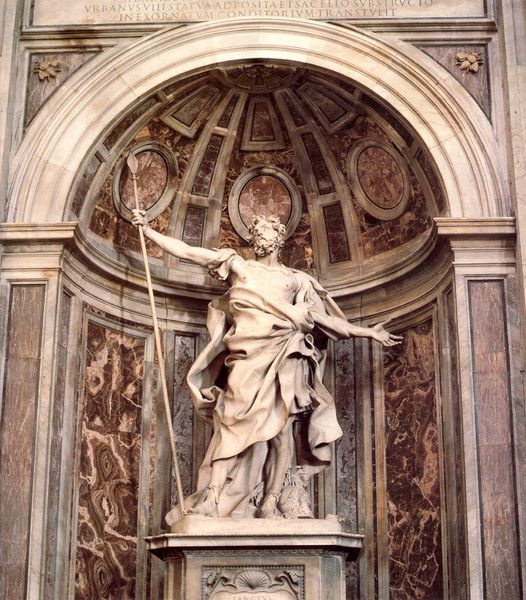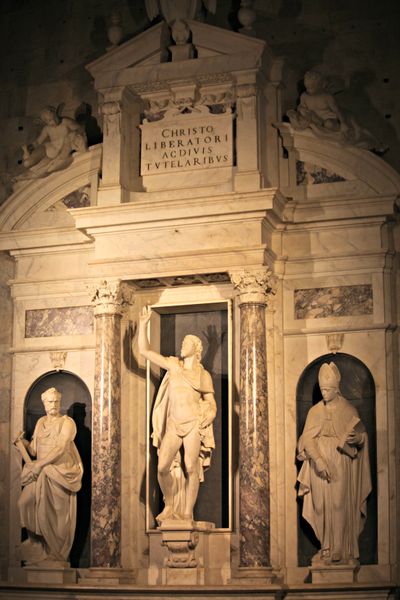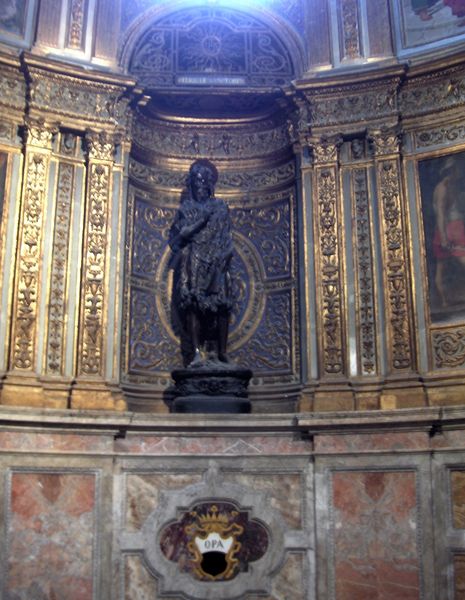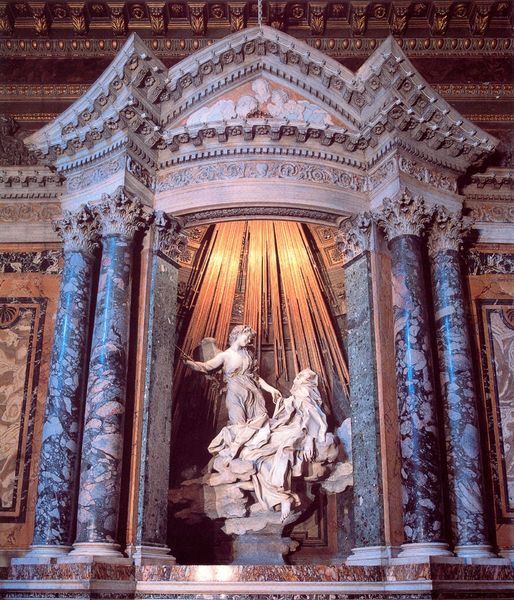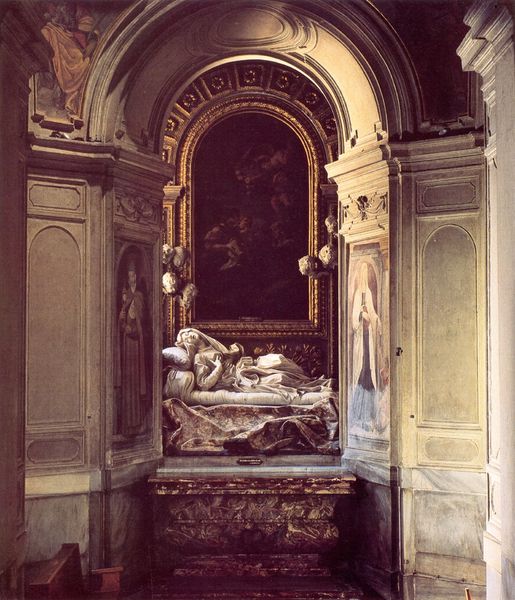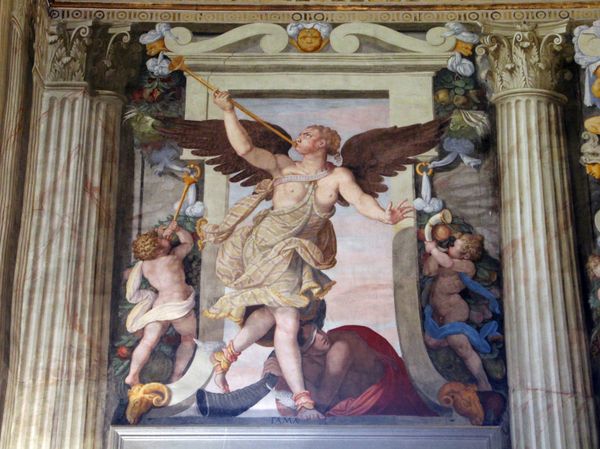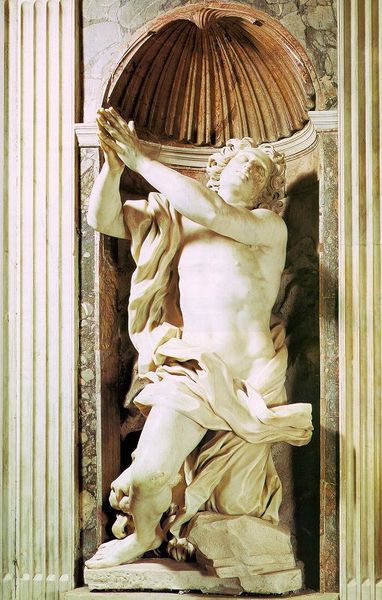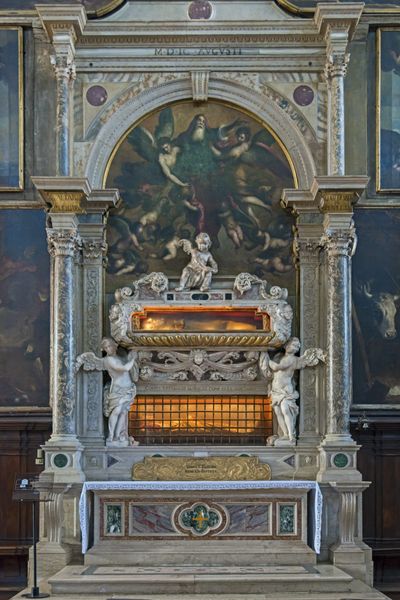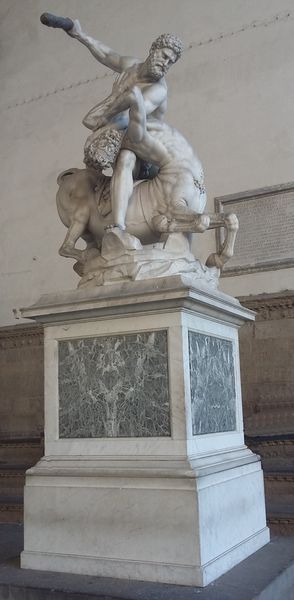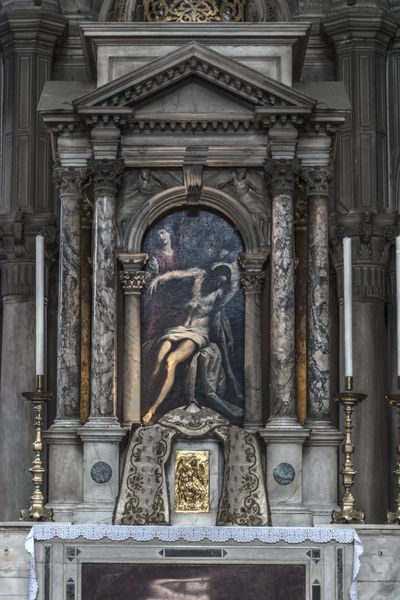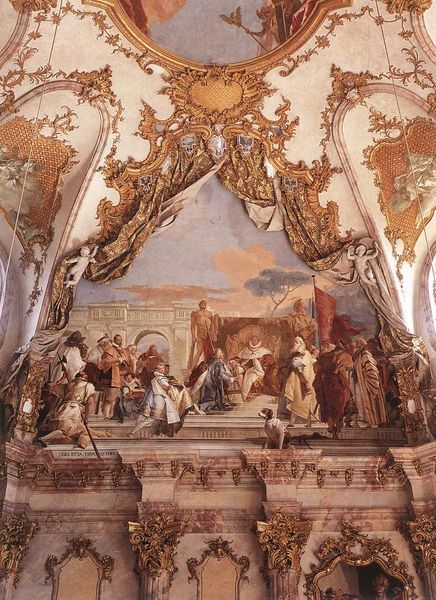
carving, photography, sculpture, marble, architecture
#
portrait
#
carving
#
baroque
#
sculpture
#
photography
#
sculpture
#
architecture
#
christianity
#
marble
#
architecture
Copyright: Public domain
Curator: Before us stands Gian Lorenzo Bernini's "Tomb of Pope Urban VIII", completed in 1647. It’s an awe-inspiring sculptural complex within St. Peter's Basilica. Editor: It certainly has a heavy, almost imposing presence. The darkness of the bronze figure of the Pope set against the white marble figures is striking. It evokes both grandeur and… finality, I suppose. Curator: Precisely. Bronze, typically used for celebratory figures, casts Urban VIII in a less celebratory light. The figure above the sarcophagus, in particular, conveys complex notions of legacy and mortality in the face of earthly glory. Note the inscription and how the skeletal figure of Death is inscribing the Pope’s name into history. Editor: Bronze was, of course, extremely costly and time-consuming to work with. Bronze casting in the 17th century demanded immense resources and highly skilled labour, underscoring the church's wealth and authority. And there is the juxtaposition with marble--suggesting different approaches of figuration--of texture, light, carving difficulty. What does the contrast do? Curator: That contrast illuminates Bernini's message of power and fate, reflecting on earthly pontificates within eternal spiritual narratives. The figures of Justice and Charity framing the sarcophagus employ symbolism steeped in Christian iconographic traditions; they aren't just figures but embodiments of cardinal virtues essential for any pontiff. The figure of Justice has a visual connection to antiquity... Bernini weaves different cultural traditions within a specifically Christian narrative. Editor: Speaking of the making, those white marble figures are particularly interesting considering the period’s artistic demands. How long do you imagine it would take a workshop to produce such exquisite marble carvings? Weeks? Months? To me, their making implies tremendous investment not just in material but human capital. Curator: Months, absolutely. A testament to the artist's vision, the Church's wealth, and, indeed, the countless hours of labor from skilled artisans translating idea into tangible reality. It becomes a story about production just as much as about power, and death. Editor: Yes, now that I see it as a layered visual and material record, I’m compelled. A convergence of not just artistic genius but economic and cultural forces too, all rendered in such durable, enduring materials. Curator: A somber, affecting realization—one that resonates across the centuries.
Comments
No comments
Be the first to comment and join the conversation on the ultimate creative platform.

